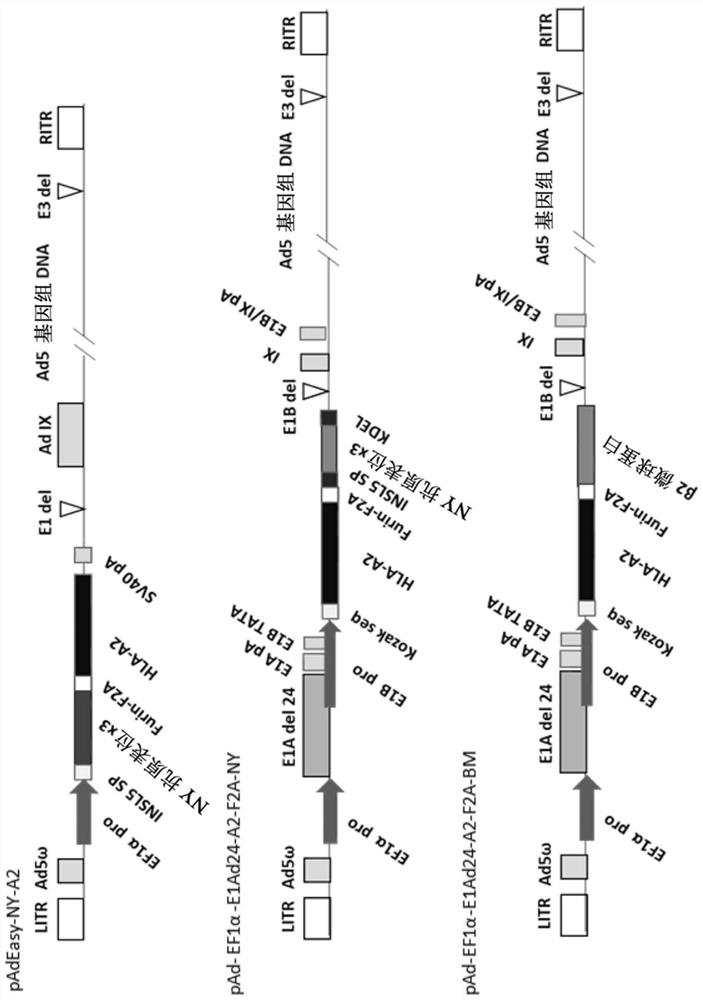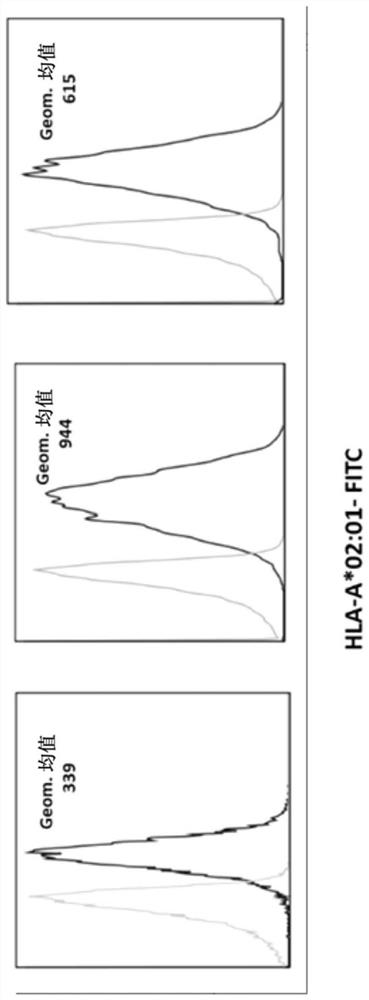Isolated oncolytic adenoviruses capable of expressing exogenous genes, vectors, therapeutic agents and uses thereof
An oncolytic adenovirus and foreign gene technology, applied in the biological field, can solve problems such as reducing the oncolytic effect of oncolytic viruses
- Summary
- Abstract
- Description
- Claims
- Application Information
AI Technical Summary
Problems solved by technology
Method used
Image
Examples
preparation example Construction
[0310] 4. Preparation of target cells expressing foreign proteins:
[0311] 293T cells or tumor cells were transfected with Lipofectamine 3000 (Thermo Fisher L3000015) according to the manufacturer's instructions. Expression plasmids include plasmids encoding the marker polypeptides, foreign HLA proteins or amino acid sequences described in this application. The method for preparing the plasmid is described below. If a plasmid containing the adenoviral genome was used to transfect 293T cells, the plasmid was predigested with PacI enzyme (New England Biolabs, R0547S) to release the adenoviral genome. Cells transiently expressing foreign proteins can be used as target cells 48-72 hours after transfection. To generate a stable SKOV3 cell line expressing NY-ESO-1 protein or a mutant KRAS protein with a G12D point mutation, 72 h after transfection with a plasmid encoding the corresponding protein, SKOV3 cells were incubated with medium supplemented with 500 μg / mL Genetin Cultiva...
Embodiment 1
[0343] This example proves that exogenous genes can be effectively expressed by the gene constructs described in this application, said constructs comprising adenoviral vectors comprising nucleic acids encoding said marker polypeptides and / or exogenous HLA class I molecules; and A lentiviral vector comprising a nucleic acid encoding a T cell receptor. Figure 1A A schematic diagram of the constructs described in this application is shown. pAdEasy-EF1α-NY-A2 is a replication-deficient adenoviral vector expressing the labeled polypeptide shown in SEQ ID NO.51, which contains NY-ESO-1 157- 165 epitope peptide, and the HLA-A2 protein shown in SEQ ID NO.12. The F2A sequence is connected between the marker polypeptide and the HLA-A2 gene. The expression unit of the marker polypeptide is flanked by an exogenous EF-1α promoter and an SV40 poly(A) signal sequence. pAd-EF1α-E1A-A2-F2A-NY is a replication-competent adenovirus vector, which contains the nucleic acid encoding the marker ...
Embodiment 2
[0347] This example proves that once the construct vector expresses the marker polypeptide and the foreign HLA class I protein, the antigenic epitope peptide can be released from the marker polypeptide and presented by the foreign source HLA class I molecule to form the antigenic peptide / HLA Class I complex, which is recognized by specific TCRs.
[0348] To assess the ability of the specific TCR expressed by JRT cells to recognize epitope peptides presented by exogenous HLA class I molecules, JRT cells were first transfected with a recombinant lentivirus co-transfected with pCDH-EF1α - 293T cell production of TCR-NY-LY, pCDH-EF1α-TCR-NY-AE or pCDH-EF1α-TCR-NY-LI and the above packaging vectors. JRT cells expressing specific TCR were co-cultured with HLA-A2 positive T2 cells, and NY-ESO-1 157-165 polypeptide in a 10-fold dilution series starting from 1 μg / ml was added to the culture wells. 16-24 hours after antigen stimulation, the percentage of CD69-positive JRT cells was ana...
PUM
 Login to View More
Login to View More Abstract
Description
Claims
Application Information
 Login to View More
Login to View More - R&D
- Intellectual Property
- Life Sciences
- Materials
- Tech Scout
- Unparalleled Data Quality
- Higher Quality Content
- 60% Fewer Hallucinations
Browse by: Latest US Patents, China's latest patents, Technical Efficacy Thesaurus, Application Domain, Technology Topic, Popular Technical Reports.
© 2025 PatSnap. All rights reserved.Legal|Privacy policy|Modern Slavery Act Transparency Statement|Sitemap|About US| Contact US: help@patsnap.com



